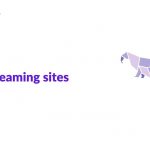In order to provide top-of-the-line service, you must monitor API performance and availability. That’s why I have shared this article on the best API monitoring tools.
Building a reliable API starts with identifying and solving issues before your users encounter them with a good API monitoring tool.
Well, the hype about the APIs is clearly understandable since their involvement in the sub-systems in different industries. If you are a business owner, you realise the importance of information flowing from one person or one sub-system to another.
Well, APIs are everywhere.
Businesses of almost any type consume the APIs to keep it running. One of the most prime examples is that of the Google Map APIs. Surprisingly, the Map API or Payment Gateway API is just the tip of the iceberg.
There is a lot more and broader meaning of the term Application Programming Interface or API here.
Contents
What Is API?
According to Wikipedia, API is defined as:
An application programming interface (API) is a connection between computers or between computer programs. It is a type of software interface, offering a service to other pieces of software. A document or standard that describes how to build such a connection or interface is called an API specification. A computer system that meets this standard is said to implement or expose an API. The term API may refer either to the specification or to the implementation.
Now, the definition clearly says that the API is clearly a connection between the programs. These programs can be any tool, hardware or software.
The risk with the APIs is that if they stop working or malfunction, they can cost your business. That’s why APIs monitoring tools are created and used to monitor constant warnings and breakdowns of APIs.
You won’t find a better solution than this one.
Here, we have reviewed the best API monitoring including both open source and commercial options.
You will learn about strengths and weaknesses, along with pricing for these web service monitoring tools, and how to find the right solution for your use case.
Best API Monitoring Tools (Free & Paid)
1. Sematext Synthetics
Simulating interactions with a website or application is the direct response to our customers’ need to improve user experience.
Through synthetic monitoring, Sematext identifies business-critical web performance metrics, sends alerts in case of a failure, measures API availability, monitors website uptime, and even benchmarks your website against your competitors.
Aside from the basic Browser monitor most vendors offer in this market, Sematext also offers the HTTP Performance Monitor, which is designed to monitor web performance using scripts that run on your site.
Therefore, you can test beyond page speed and examine user interaction, including the process of logging in and registering, adding items to the cart, and running a search.
Additionally, with Sematext Synthetics you’ll have the ability to monitor your SSL Certificates both from your public and private domains (behind your firewall).
In Synthetics -> Status pages, you can create a page for displaying public and private incidents.
It features a customizable API monitoring notification system based on errors or metrics that you can use with Sematext’s synthetic monitoring tool. Sematext can do double and triple checks before sending you an alert, so you have more control over the alerts you get.
In this way, false positives are reduced (alerts are sent even when a website is functioning fine). You can also set your alerts to be sent at specific hours throughout the day as an added bonus.
You’ll see three packages on the pricing page: Standard, Pro, or Pay-as-you-Go. Standard costs $29 a month, while Pro costs $99 a month, while Pay-as-you-Go starts at $2.
2. Prometheus
Due to its inherent simplicity, Prometheus is among the most popular open-source API monitoring tools and web services in cloud applications.
Documentation for Prometheus includes detailed instructions on how the tool works, how to set it up, and how to use it effectively. Prometheus’s official website has a blog dedicated to exploring use cases, tips, tricks, and features written by writers around the world who are using the software every day.
Unlike an out-of-the-box API monitoring tool, Prometheus lacks data analysis capabilities. Data for each metric is only stored on the local disk, and an append-only file is relied upon. We recommend that you consider remote storage if you end up using Prometheus for long-term retention and analysis.
3. Graphite
Its Carbon component stores data in a database after it is pushed into Graphite’s Carbon component. Graphite is a push-based open source monitoring system.
Thanks to Synthesize, an automated installation and configuration script for the Graphite stack, Graphite stands out from the rest of the open-source stack due to how easy it is to install and use.
Time-series metrics can be related to arbitrary events in Graphite by storing them. In particular, Graphite can be used to add and track applications or infrastructure deployments.
As a result, developers are better able to identify the issue faster by having more context about the event and the anomaly that caused it.
4. Uptrends
Using Uptrends’ API monitoring product, APIs are tested for performance, function, and uptime using a multi-step solution. An alerting system is in place to notify users when something breaks.
Uptrends can monitor your API from 209 locations around the world and test your web services and application behind your firewall using Private checkpoints.
Uptrends checkpoint software monitors your intranet, web applications, and APIs using these private checkpoints, which may be virtual machines or physical servers on-premise.
Monitoring scenarios can be set up in a very flexible way without the need to learn programming. You get instant alerts and customized metrics, and the configuration is straightforward.
They offer multiple pricing plans, but their advanced website monitoring plans don’t include API monitoring. Their Business plan starts at $35 per month, and their Enterprise plan is $65 per month.
5. Dotcom-Monitor
Through Dotcom-Monitor, API functionality, performance, and availability can be monitored. Twenty five locations and seven browsers will be used to run your tests.
The setup process is quite simple. You may test either a REST or a SOAP web service for performance, uptime, and response content by calling a specified web function.
By using Postman Collection Task, you can import your calls directly from Postman into dotcom-monitor.
After you run the test, you’ll receive a grade based on your load time and a detailed report of your server response. You can check what a repeat visit looks like for someone who has already cached resources on their machine and visits your site a second time.
Additionally, you will receive an insight report from Lighthouse regarding page speed.
They offer a risk-free 30-day trial, and their pro plans start at $19.95 per month and go up to $39.95 per month.
6. AppDynamics
IO Monitor is an API monitoring tool from Cisco, which is part of their product suite. You can help enhance user experiences and reduce risks with AppDynamics’ real-time monitoring solutions.
AppDynamics’ Selenium functionality allows you to measure data and user interactions in the entire workflow. So you will be prepared to serve users at any time.
Using their browser timing and navigation APIs, they’ll provide you with complete resource waterfalls and load times for your pages, so you can evaluate end-user experience based on what users see, rather than just some proxy evaluation.
This comparison’s most expensive solution is AppDynamics, which starts at $3300/year for a 15-day trial.
7. Checkly
Checkly is still a relatively new player on the market, but its tools enable developers to develop systems using modern technologies, such as JavaScript. Monitors are run to ensure your APIs are performing correctly and accurately. Checkly’s API Monitoring is one of its most popular features.
Your responses can be recorded in Checkly, as well as headers, response codes, and authentication information. It’s less than what we tend to get with the other vendors on this list, but this vendor lets you run monitors from 20 different locations throughout the world.
Whenever Checkly runs into an issue or your API performance drops, a detailed error message will be displayed. There are many different alerting methods available, such as Slack, SMS, Email, PagerDuty, and more.
There are two different pricing options, so pricing is fairly straightforward. They offer two plans: a free plan with 50K API checks per month, and a pay-per-use plan for $1.20 per 20K API checks. You can try all plans for 14 days for free.
8. API Fortress
As an API monitoring and REST API solution, API Fortress is a bit of a combo. You can quickly test payloads, API traffic subsets, and many other things with its beautiful interface.
When it comes to preventing downtimes and other issues, using both services will give you an extra layer of confidence.
With this tool, you can easily share information in real-time with your entire team, examine data in real-time and keep a history of data to ensure service level agreement compliance.
The API Fortress solution can be installed and hosted on a Linux server or as a cloud-based SaaS solution. For a single user license, it starts at $1500/year, but you can get a 30-days trial to test features.
9. Runscope
Runscope prevents your apps or web services from being affected by slow or broken APIs as a result of its API monitoring capabilities.
Any issues with your system will be detected immediately and an alert sent immediately and it will be scheduled to run from one of 16 locations worldwide.
With it, you can integrate Slack, DataDog, Pagerduty, and many others. Four simple plans start at $79 per month. There is a limit of 250000 requests and 1-minute tests. A team of up to five people can be invited to the Small package.
Runscope’s features can be tested for 14 days before deciding on a plan without the need to add your credit card.
10. Speedcurve
Speedcurve does not focus on monitoring APIs and instead focuses on RUM monitoring. Your most important content can be measured when it renders, user experience can be tracked, and you can even benchmark your competitors.
Your website’s performance will be tracked through Speedcurve as well as third party APIs.
A better understanding of web performance at a page level can be achieved by comparing synthetic data with real user monitoring data.
Besides costing a whopping $18,000 per year, they also offer real-time and synthetic monitoring options for granular control over your bill, as well as pay-as-you-go plans. The company offers a 30-day free trial before you choose any of its services.
11. UptimeRobot
Especially for small businesses, UptimeRobot is a great API monitoring tool. In addition, it monitors SSL certificates, cron jobs, and websites. With UptimeRobot, you can monitor third-party APIs and make sure they are working as expected.
With UptimeRobot, you can run interval checks every five minutes on 50 monitors for free, and opt for a Pro plan with voice and SMS alerts based on your needs. One last third of the Enterprise plans offer a customized number of monitors and SMS alerts along with high priority support.
Getting up to 828 monitoring alerts and monitors is the main difference between UptimeRobot’s plans, which start at $5 per month. You can also monitor 50 APIs for free at intervals of 5 minutes with their free plan.
12. New Relic
The leading application performance monitoring tool on the market, New Relic, is a good choice, according to many analysts. From Fortune 500 behemoths to small, nimble startups – it’s employed by both large and small companies.
Accordingly, New Relic puts a great deal of emphasis on its understanding of DevOps and, in turn, this platform provides a complete and live snapshot of your infrastructure.
Easily view the flow of data and where bottlenecks might exist, with New Relic’s intuitive layout. A screenshot will give you a better idea of how the UI is designed:
As you can see, the flow of data between systems and the results of the performance metrics can be visually tracked. The business can address slowness and downtime immediately by generating instant alerts.
There is more to New Relic than DevOps. As well as setting goals and rules for customer experience, detailed reports can help determine what needs to be done.
This information is solid gold for digital marketers, as any of them can attest.
New Relic has an endless array of ingenious dashboards. Check out this one, which shows each node in the application cluster on a map, and gives live feedback on the status of each node.
No matter how complex or simple your application is, New Relic offers many interesting insights.
Verdict: What Is The Best API Monitoring Tool for You?
With that, we end our list with the top API monitoring tools and services. We included options for everyone, from DevOps to engineers, product managers, or business owners, whether they need a basic service or have more complex needs.
You can learn how to choose the right one for you from our guide about API monitoring.
Whatever your case, Sematext Synthetics can definitely help. Try it out yourself! To test-drive it, you can take advantage of a free trial period of 14 days.
We also suggest that you consider a monitoring strategy that includes synthetic monitoring and real user monitoring in addition to APIs.
To help you in your journey to lightning-quick performance, we’ve compiled a list of the top website monitoring tools. There are tools in this list that are useful to everyone, from business owners to developers to testers to project managers.
Have something to say about this article? Comment below or share it with us on Facebook, Twitter, or our LinkedIn.

























